Industrial Applications for Embedded Vision
Computer vision processing-based products are established in a number of industrial applications
Computer vision processing-based products have established themselves in a number of industrial applications, with the most prominent one being factory automation (where the application is commonly referred to as machine vision). Primary factory automation sectors include:
- Automotive — motor vehicle and related component manufacturing
- Chemical & Pharmaceutical — chemical and pharmaceutical manufacturing plants and related industries
- Packaging — packaging machinery, packaging manufacturers and dedicated packaging companies not aligned to any one industry
- Robotics — guidance of robots and robotic machines
- Semiconductors & Electronics — semiconductor machinery makers, semiconductor device manufacturers, electronic equipment manufacturing and assembly facilities
What are the primary embedded vision products used in factory automation applications?
The primary embedded vision products used in factory automation applications are:
- Smart Sensors — A single unit that is designed to perform a single machine vision task. Smart sensors require little or no configuring and have limited on-board processing. Frequently a lens and lighting are also incorporated into the unit.
- Smart Cameras — This is a single unit that incorporates a machine vision camera, a processor and I/O in a compact enclosure. Smart cameras are configurable and so can be used for a number of different applications. Most have the facility to change lenses and are also available with built-in LED lighting.
- Compact Vision System — This is a complete machine vision system, not based on a PC, consisting of one or more cameras and a processor module. Some products have an LCD screen incorporated as part of the processor module. This obviates the need to connect the devices to a monitor for set-up. The principal feature that distinguishes compact vision systems (CVS) from smart cameras is their ability to take information from a number of cameras. This can be more cost-effective where an application requires multiple images.
- Machine Vision Cameras (MV Cameras) — These are devices that convert an optical image into an analogue or digital signal. This may be stored in random access memory, but not processed, within the device.
- Frame Grabbers — This is a device (usually a PCB card) for interfacing the video output from a camera with a PC or other control device. Frame grabbers are sometimes called video-capture boards or cards. They vary from being a simple interface to a more complex device that can handle many functions including triggering, exposure rates, shutter speeds and complex signal processing.
- Machine Vision Lighting — This refers to any device that is used to light a scene being viewed by a machine-vision camera or sensor. This report considers only those devices that are designed and marketed for use in machine-vision applications in an industrial automation environment.
- Machine Vision Lenses — This category includes all lenses used in a machine-vision application, whether sold with a camera or as a spare or additional part.
- Machine Vision Software — This category includes all software that is sold as a product in its own right, and is designed specifically for machine-vision applications. It is split into:
- Library Software — allows users to develop their own MV system architecture. There are many different types, some offering great flexibility. They are often called SDKs (Software Development Kits).
- System Software — which is designed for a particular application. Some are very comprehensive and require little or no set-up.

Unveiling the Qualcomm Dragonwing Brand Portfolio: Solutions For a New Era of Industrial Innovation
This blog post was originally published at Qualcomm’s website. It is reprinted here with the permission of Qualcomm. Our mission is to deliver intelligent computing everywhere. We have an amazing suite of products, and while you may be familiar with the Snapdragon brand portfolio, you may not know that we have a whole suite of
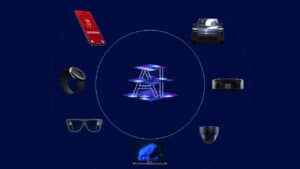
AI Disruption is Driving Innovation in On-device Inference
This article was originally published at Qualcomm’s website. It is reprinted here with the permission of Qualcomm. How the proliferation and evolution of generative models will transform the AI landscape and unlock value. The introduction of DeepSeek R1, a cutting-edge reasoning AI model, has caused ripples throughout the tech industry. That’s because its performance is on

Empowering Civil Construction with AI-driven Spatial Perception
This blog post was originally published at Au-Zone Technologies’ website. It is reprinted here with the permission of Au-Zone Technologies. Transforming Safety, Efficiency, and Automation in Construction Ecosystems In the rapidly evolving field of civil construction, AI-based spatial perception technologies are reshaping the way machinery operates in dynamic and unpredictable environments. These systems enable advanced
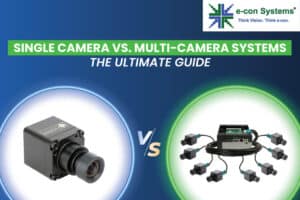
Single- vs. Multi-camera Systems: The Ultimate Guide
This blog post was originally published at e-con Systems’ website. It is reprinted here with the permission of e-con Systems. Single and multiple camera setups play a vital role in today’s vision systems, enhancing applications such as Automated sports broadcasting, Industrial robots, Traffic monitoring and more. Explore the key differences, advantages, and real-world applications of
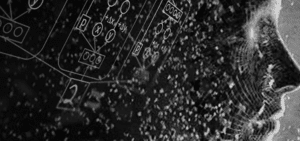
Computer Vision and AI at the Edge with a Thermal Camera Provider and a Toy Manufacturer
This blog post was originally published at Digica’s website. It is reprinted here with the permission of Digica. As the pace of artificial intelligence innovation accelerates, we’re seeing AI and computer vision go from science fiction tropes to enabling highly efficient and compelling applications. This integration is particularly potent at the edge, where devices locally
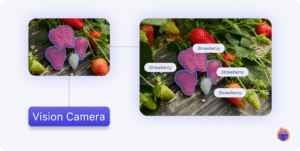
Top 4 Computer Vision Problems & Solutions in Agriculture — Part 2
This blog post was originally published at Tenyks’ website. It is reprinted here with the permission of Tenyks. In Part 1 of this series we introduced you with the top 4 issues you are likely to encounter in agriculture related datasets for object detection: occlusion, label quality, data imbalance and scale variation. In Part 2

Dietmar Ley Elected Chairman of the VDMA Robotics + Automation Association
Ley will hold the honorary position for three years and emphasizes the role of the committee as a strong voice for European robotics and automation suppliers Ahrensburg, November 22, 2024 – Dr. Dietmar Ley, CEO of Basler AG, has been elected as the new Chairman of the VDMA Robotics + Automation Association. Ley has been

Synthetic Data is Revolutionizing Sensor Tech: Real Results from Virtual Worlds
This blog post was originally published at Geisel Software’s website. It is reprinted here with the permission of Geisel Software. Imagine you’re a developer on your first day at a new job. You’re handed a state-of-the-art sensor designed to capture data for an autonomous vehicle. The excitement quickly turns to anxiety as you realize the
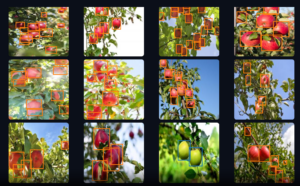
Top 4 Computer Vision Problems & Solutions in Agriculture — Part 1
This blog post was originally published at Tenyks’ website. It is reprinted here with the permission of Tenyks. In Part 1 of this series, we highlight the 4 main issues you are likely to encounter in object detection datasets in agriculture. We begin by summarizing the challenges of applying AI to crop monitoring and yield

How Qualcomm Technologies’ New Platforms Power the Most Demanding Applications in Extreme Environments
This blog post was originally published at Qualcomm’s website. It is reprinted here with the permission of Qualcomm. The convergence of physical and digital technologies is transforming industries and driving the need for more advanced platforms to power the next generation of industrial IoT (IIoT) devices. The result is a dramatic leap in demand for
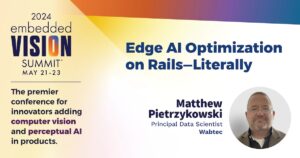
“Edge AI Optimization on Rails—Literally,” a Presentation from Wabtec
Matthew Pietrzykowski, Principal Data Scientist at Wabtec, presents the “Edge AI Optimization on Rails—Literally” tutorial at the May 2024 Embedded Vision Summit. In this talk, Pietrzykowski shares highlights from his company’s adventures developing computer vision solutions for the rail transportation industry. He begins with an introduction to the types of… “Edge AI Optimization on Rails—Literally,”

Basler Presents Small and Fast Line Scan Cameras for Mainstream Applications
With the new 2k and 4k line scan cameras racer 2 S, Basler is expanding its racer 2 camera series. Together with many compatible components, Basler offers everything needed for a complete line scan vision system for mainstream applications, e.g. special line scan LED illumination and C-mount lenses. Ahrensburg, October 29, 2024 – Basler AG

Qualcomm Introduces Industrial-grade IQ Series and IoT Solutions Framework to Usher in New Era of Industrial Intelligence
Highlights: Qualcomm introduces a new portfolio for industrial IoT for the AI era, leading the transition to connected intelligent end points and empowering developers and enterprises to build the next generation of edge AI solutions across industries. The Qualcomm IoT Solutions Framework aids enterprises in solving the most daunting business challenges by tailoring platforms that

“Data-efficient and Generalizable: The Domain-specific Small Vision Model Revolution,” a Presentation from Pixel Scientia Labs
Heather Couture, Founder and Computer Vision Consultant at Pixel Scientia Labs, presents the “Data-efficient and Generalizable: The Domain-specific Small Vision Model Revolution” tutorial at the May 2024 Embedded Vision Summit. Large vision models (LVMs) trained on a large and diverse set of imagery are revitalizing computer vision, just as LLMs… “Data-efficient and Generalizable: The Domain-specific
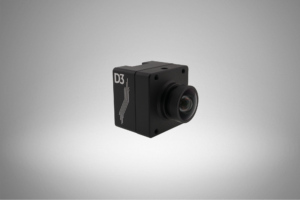
D3 Embedded Introduces Camera Modules Based on Valens Semiconductor’s VA7000 MIPI A-PHY Chipsets
The integration of MIPI A-PHY into DesignCore® Series Cameras will accelerate time-to-market for customers developing performance-critical products for robotics, industrial vehicles, and other embedded vision applications. Rochester, NY – October 8th, 2024 – D3 Embedded, a global leader in embedded vision systems design and manufacturing, today announced that it has partnered with Valens Semiconductor, a
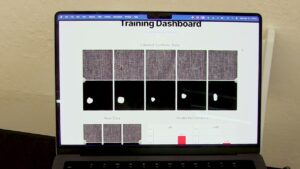
Advex AI Demonstration of Accelerating Machine Vision with Synthetic AI Data
Pedro Pachuca, CEO at Advex AI, demonstrates the company’s latest edge AI and vision technologies and products at the September 2024 Edge AI and Vision Alliance Forum. Specifically, Pachuca demonstrates Advex’s ability to ingest just 10 images and produce thousands of labeled, synthetic images in just hours. These synthetic images cover the distribution of variations
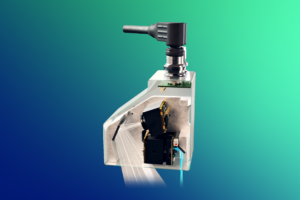
Vision Components at VISION 2024: Ultra-compact OEM Module for Triangulation Sensors
Vision Components presents a new, ultra-compact OEM module for the development of individual triangulation sensors for the first time at VISION. Ettlingen, September 26, 2024 – For the first time ever, Vision Components will present a new, ultra-compact OEM module for laser triangulation sensors at VISION 2024 (October 8-10, Messe Stuttgart). It is aimed at
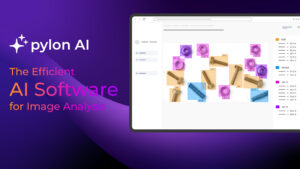
Basler Presents pylon AI, a New AI Image Analysis Software for Complex Applications
With pylon AI, Basler AG presents software for easy entry into precise image analysis with artificial intelligence. pylon AI focuses on efficiency in the target application: The performance benchmarking function enables users to determine the most powerful processing hardware for their application. The AI applications created with pylon AI can be used without any programming
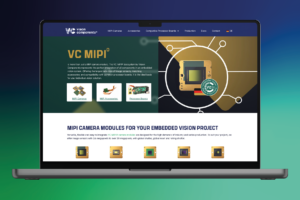
MIPI-modules.com: A New Website for the Vision Components MIPI Ecosystem
mipi-modules.com is now the one-stop source for all information on MIPI cameras, accessories and compatible processor boards from Vision Components. Ettlingen, September 16, 2024 – Vision Components has launched a dedicated website for the VC MIPI Ecosystem. At mipi-modules.com, it presents all details on VC MIPI Camera Modules, accessories and services for quick and easy

Upcoming FRAMOS Webcast: Optimizing Optical Performance in Embedded Vision Systems
Munich/Taufkirchen, Bavaria, Germany — September 11th, 2024 — FRAMOS, the leading global expert in embedded vision systems, invites you to its webcast on the integration and optimization of embedded optical systems. The webcast will be part of this year’s InVision Tech Talks on September 24. It is aimed at a professional audience from industries such
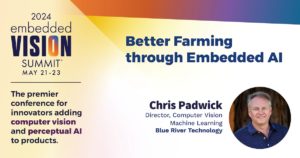
“Better Farming through Embedded AI,” a Presentation from Blue River Technology
Chris Padwick, Director of Computer Vision Machine Learning at Blue River Technology, presents the “Better Farming through Embedded AI” tutorial at the May 2024 Embedded Vision Summit. Blue River Technology, a subsidiary of John Deere, uses computer vision and deep learning to build intelligent machines that help farmers grow more… “Better Farming through Embedded AI,”
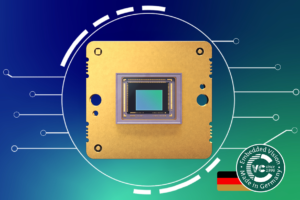
Vision Components at the VISION 2024 Exhibition: From MIPI Cameras to Perfectly Integrated Vision
Ettlingen, August 28, 2024 – Vision Components will present its portfolio of new MIPI cameras, embedded vision systems and OEM sensors at the VISION 2024 trade fair (October 8-10, Messe Stuttgart). Always in focus: fast, easy and flexible integration for industrial applications. Highlights include the first global shutter MIPI camera module with IMX900 image sensor
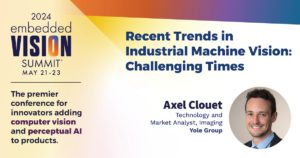
“Recent Trends in Industrial Machine Vision: Challenging Times,” a Presentation from the Yole Group
Axel Clouet, Technology and Market Analyst for Imaging at the Yole Group, presents the “Recent Trends in Industrial Machine Vision: Challenging Times” tutorial at the May 2024 Embedded Vision Summit. For decades, cameras have been increasingly used in industrial applications as key components for automation. After two years of rapid growth in 2021 and 2022,

Advantech Demonstration of AI Vision with an Edge AI Camera and Deep Learning Software
Brian Lin, Field Sales Engineer at Advantech, demonstrates the company’s latest edge AI and vision technologies and products at the 2024 Embedded Vision Summit. Specifically, Lin demonstrates his company’s edge AI vision solution embedded with NVIDIA Jetson platforms. Lin demonstrates how Advantech’s industrial cameras, equipped with Overview’s deep-learning software, effortlessly capture even the tiniest defects
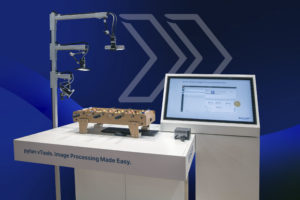
Basler AG Presents Machine Vision Solution Portfolio at Vision 2024
Under the motto “ACCELERATE YOUR VISION: Everything You Need for Your Vision Application”, Basler AG is taking the next step towards becoming a solution provider for industrial image processing at VISION from October 8 to 10, 2024 in Stuttgart. Basler will be showcasing new hardware and AI-supported software tools in practical applications at its stand.
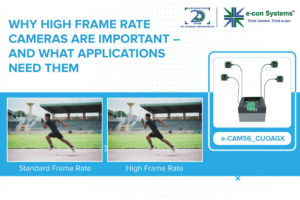
Why High Frame Rate Cameras are Important, and What Applications Need Them
This blog post was originally published at e-con Systems’ website. It is reprinted here with the permission of e-con Systems. As embedded vision systems keep taking quantum leaps to become more innovative and intuitive, it’s becoming more complex to address the specifications for resolution and frame rate. As you may know, conventionally, applications used in

Axelera AI Demonstration of Fast and Efficient Workplace Safety with the Metis AIPU
Bram Verhoef, Co-founder of Axelera AI, demonstrates the company’s latest edge AI and vision technologies and products at the 2024 Embedded Vision Summit. Specifically, Verhoef demonstrates how his company’s Metis AIPU can accelerate computer vision applications. Axelera AI, together with its partner FogSphere, has developed a computer vision system that detects if people are wearing
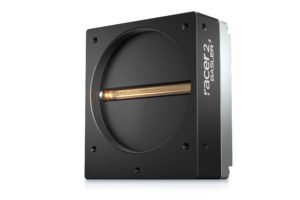
Basler Presents New CXP-12 Line Scan Cameras with 8k and 16k Resolution
With the new racer 2 L 8k and 16k line scan cameras, Basler is launching the first models in its new line scan camera series. They are equipped with the latest Gpixel sensors and CXP-12 interface. In addition to the cameras, Basler offers all other important components for a line scan vision system, including lighting
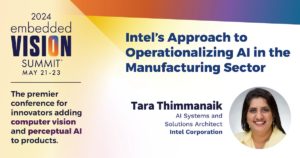
“Intel’s Approach to Operationalizing AI in the Manufacturing Sector,” a Presentation from Intel
Tara Thimmanaik, AI Systems and Solutions Architect at Intel, presents the “Intel’s Approach to Operationalizing AI in the Manufacturing Sector,” tutorial at the May 2024 Embedded Vision Summit. AI at the edge is powering a revolution in industrial IoT, from real-time processing and analytics that drive greater efficiency and learning to predictive maintenance. Intel is
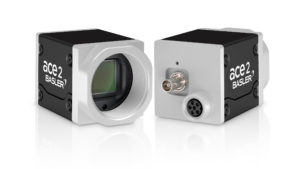
ace 2 V: Basler Presents CoaXPress 2.0 Camera in a Small Design
With the new ace 2 V models, Basler AG presents compact cameras with the CoaXPress 2.0 interface. The international manufacturer of high-quality machine vision hardware and software also offers all the components necessary for a complete, cost-effective CXP vision system. Ahrensburg, June 25, 2024 – The Basler ace 2 V expands the portfolio of the
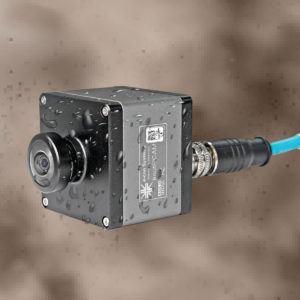
e-con Systems Unveils New Robust All-weather Global Shutter Ethernet Camera for Outdoor Applications
Latest powerful addition to its RouteCAM series California & Chennai (June 12, 2024): e-con Systems, a global leader in embedded vision solutions, introduces a new Outdoor-Ready Global Shutter GigE camera — RouteCAM_CU25, the powerful addition to its high performance Ethernet camera series, RouteCAM. This Full HD Power over Ethernet (PoE) camera excels in delivering accurate

Basler AG Acquires Stake in Roboception GmbH
Computer vision expert Basler and 3D vision specialist Roboception strengthen existing cooperation by acquiring a 25.1% stake and plan to expand the 3D solutions business for factory automation, robotics and logistics. Ahrensburg, June 12, 2024 – Basler AG, a leading supplier of image processing components for computer vision applications, has acquired 25.1 % of the
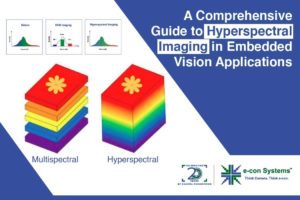
A Comprehensive Guide to Hyperspectral Imaging in Embedded Vision Applications
This blog post was originally published at e-con Systems’ website. It is reprinted here with the permission of e-con Systems. Hyperspectral imaging lets cameras see beyond human vision. It offers a high spectral resolution by capturing data in large numbers of spectral bands. Explore the technical aspects of hyperspectral imaging and discover its applications in
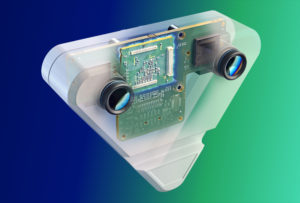
New Vision Components MIPI Cameras with GMSL2 and Miniature Vision Systems for Smart and Autonomous Devices
Vision Components presents at CVPR 2024 Ettlingen, May 14, 2024 – Vision Components presents its MIPI CSI-2 Camera lineup with an optional GMSL2 interface for data transmissions with cables up to 10 meters long at the Computer Vision and Pattern Recognition (CVPR) Conference, 17-21 June in Seattle. Further highlights are the world’s first MIPI Camera
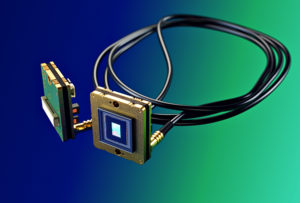
Vision Components’ MIPI Cameras with GMSL2 for Cable Lengths of Up to 10 Meters
Vision Components extends its MIPI porfolio Ettlingen, May 14, 2024 – Vision Components offers its VC MIPI Cameras from now on with an optional GMSL2 interface for data transmission with cables up to 10 meters long. The company has therefore developed an adapter board that is fully integrated into the design of the modules. The
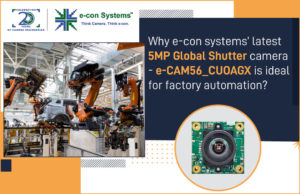
Why e-con Systems’ Latest 5MP Global Shutter Camera is Ideal for Factory Automation
This blog post was originally published at e-con Systems’ website. It is reprinted here with the permission of e-con Systems. Embedded vision has transformed factory automation – thanks to advances in sensor technology, processing power, and AI. Discover the key features of e-CAM56_CUOAGX, e-con Systems’ latest camera and see why it’s perfect for factory automation.
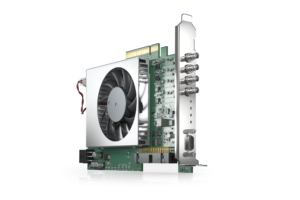
Basler Presents a New, Programmable CXP-12 Frame Grabber
With the imaFlex CXP-12 Quad, Basler AG is expanding its CXP-12 vision portfolio with a powerful, individually programmable frame grabber. Using the graphical FPGA development environment VisualApplets, application-specific image pre-processing and processing for high-end applications can be implemented on the frame grabber. Basler’s boost cameras, trigger boards, and cables combined with the card form a
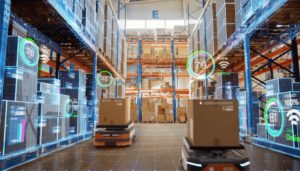
The Role of Embedded Vision in Ensuring Industrial Safety
This blog post was originally published at TechNexion’s website. It is reprinted here with the permission of TechNexion. Despite numerous rules and regulations in place, ensuring complete workplace safety still seems challenging in the industrial and commercial sectors. According to the US Department of Labor: “4,764 workers died on the job in 2020 (3.4 per

